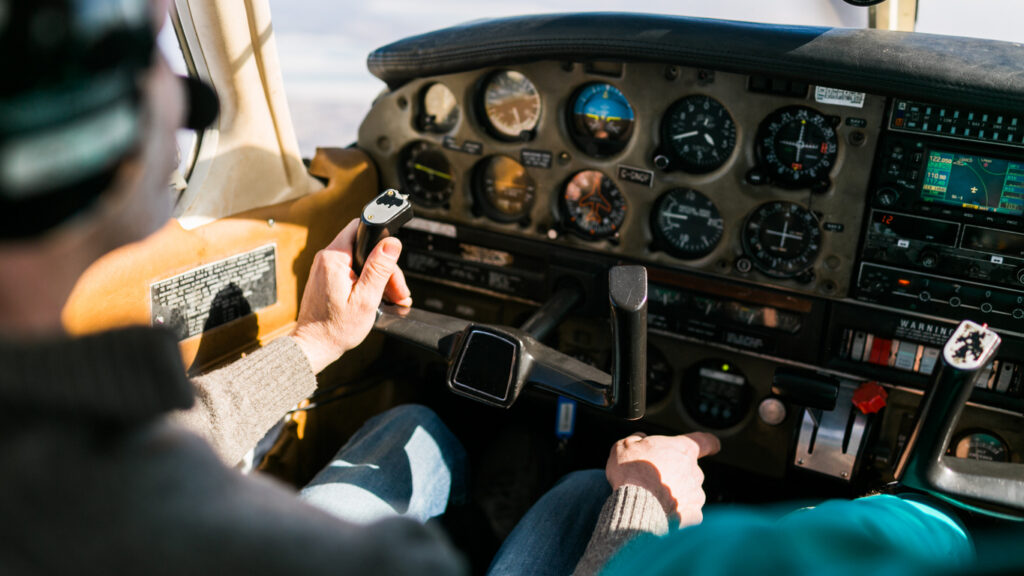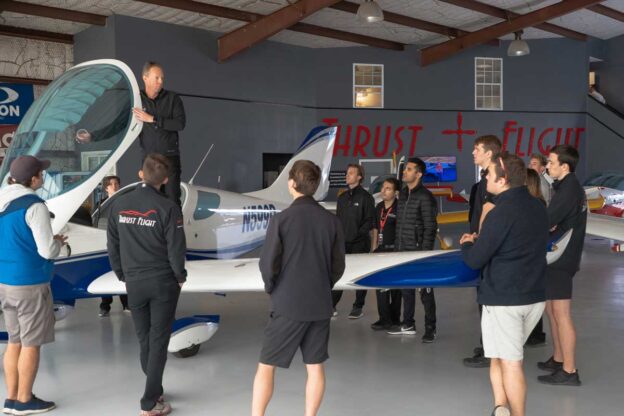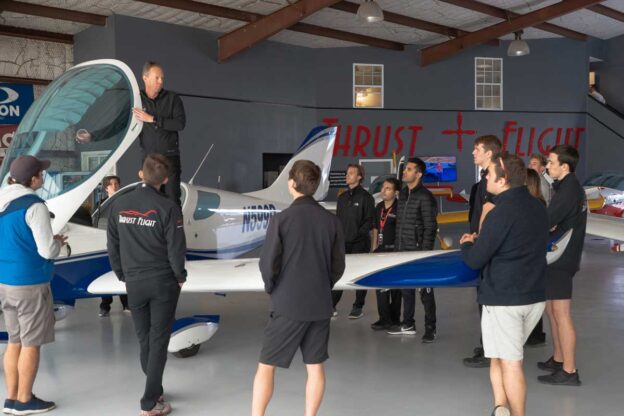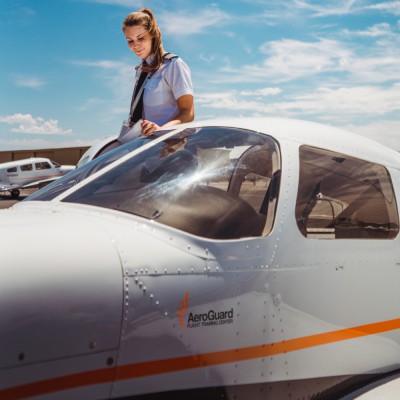If you’ve ever dreamed of taking to the skies, Texas might just be the perfect place to make that dream a reality. But before you start packing your bags and rushing off to enroll in flight school, you might find yourself wondering just how long it takes to complete the program. Well, fear not, aspiring aviators, because in this article, we will explore the duration of flight school in Texas and provide you with all the information you need to soar towards your pilot’s license.

Private Pilot License
Ground School
In order to obtain a Private Pilot License (PPL), you first need to complete ground school. This is where you will learn the fundamental principles of flight, navigation, meteorology, aerodynamics, and aviation regulations. The duration of ground school can vary depending on the program you choose, but typically it takes around 35 to 40 hours of classroom instruction. It’s important to study and grasp these concepts thoroughly as they form the foundation of your aviation knowledge.
Flight Training
Once you have completed ground school, it’s time to take to the skies! Flight training is a crucial part of becoming a licensed pilot. During this phase, you will gain hands-on experience and learn practical flying skills. The flight training portion of a PPL usually requires a minimum of 40 hours of flight time, including both dual instruction with an instructor and solo flight hours. However, it’s important to note that the actual number of hours required can vary based on individual progress and proficiency.
Solo Flight Requirements
As part of your PPL training, you will need to complete a certain number of solo flight hours. These flights will allow you to develop your skills and build confidence in flying without an instructor by your side. The Federal Aviation Administration (FAA) requires a minimum of 10 hours of solo flight time, including at least 5 hours of solo cross-country flights. Your flight instructor will assess your readiness before authorizing your solo flights to ensure your safety and competence.
Written Exam
In order to earn your PPL, you will need to pass a written exam administered by the FAA. The exam covers various topics including air law, navigation, weather, aircraft systems, and aerodynamics. It consists of multiple-choice questions and requires a thorough understanding of the material covered in ground school. Proper preparation and study are essential to successfully passing the written exam.
Checkride
The final step in obtaining your PPL is the checkride, which is essentially a practical test conducted by an FAA-designated examiner. During the checkride, you will be evaluated on your flying skills, decision-making ability, and knowledge of aviation regulations. This is an opportunity to demonstrate your proficiency as a pilot and showcase everything you have learned during your training. Upon successful completion of the checkride, you will be issued your Private Pilot License, allowing you to fly aircraft for personal use.
Instrument Rating
Prerequisites
To pursue an Instrument Rating, you must already hold a Private Pilot License. This additional rating allows you to fly under Instrument Flight Rules (IFR), which means you can fly in less-than-ideal weather conditions and rely primarily on the instrumentation inside the cockpit. It’s a valuable skill for pilots who want to increase their proficiency and safety.
Ground School
Similar to the PPL, acquiring an Instrument Rating requires ground school training. This focuses on advanced topics such as instrument navigation, procedures, approaches, and regulations specific to instrument flying. The duration of ground school for the Instrument Rating can vary, but generally, it ranges from 40 to 60 hours.
Flight Training
Flight training for the Instrument Rating is a combination of simulator sessions and actual flight time. This training is designed to develop your ability to fly solely by reference to instruments and enhance your situational awareness in various weather conditions. Typically, you are required to log a minimum of 50 hours of instrument flight time, including both simulated and actual instrument approaches and navigation.
Written Exam
As with any pilot certification, you must pass a written exam to earn your Instrument Rating. This exam focuses specifically on instrument procedures, regulations, and safety practices. Adequate preparation is crucial to ensure success on this exam, and studying the instrument rating materials thoroughly is essential.
Checkride
The final step in obtaining your Instrument Rating is the checkride. During this examination, an FAA-designated examiner will evaluate your instrument flying skills, ability to interpret instrument approaches, and overall proficiency in instrument flight operations. Successful completion of the checkride will result in the addition of the Instrument Rating to your pilot’s license.

This image is property of www.bestaviation.net.
Commercial Pilot License
Prerequisites
To even consider pursuing a Commercial Pilot License (CPL), you must meet specific prerequisites set by the FAA. These prerequisites include being at least 18 years old, holding a Private Pilot License, accumulating a minimum of 250 flight hours (including specific required flight time), and passing a medical examination.
Ground School
Similar to the previous licenses, ground school is a mandatory part of the CPL training process. In ground school, you will deepen your knowledge on topics such as advanced aerodynamics, aircraft systems, high-altitude operations, regulations, advanced navigation, meteorology, and more. The duration of ground school varies depending on the program, generally ranging from around 200 to 300 hours.
Flight Training
Flight training for a CPL is an intensive and rigorous process. Throughout this phase, you will develop the necessary skills and proficiency to operate aircraft safely and effectively in various conditions. The FAA requires a minimum of 250 flight hours, including specific categories such as solo flight time, cross-country flights, and night flying. However, it’s important to note that many individuals end up logging more flight hours to ensure proficiency and meet the industry standards.
Written Exam
Successfully passing a written exam is a requirement for the CPL. The exam covers advanced aviation topics such as advanced aerodynamics, flight planning, regulations, decision-making, aircraft performance, and more. Studying and preparing for this exam is crucial, as it tests your knowledge and understanding of the concepts taught during ground school.
Checkride
Similar to the PPL and Instrument Rating, the CPL culminates in a checkride with an FAA-designated examiner. During this examination, your flying skills, aeronautical decision-making, emergency procedures, and overall proficiency in commercial flying operations will be evaluated. Upon successful completion of the checkride, you will be granted a Commercial Pilot License, allowing you to fly for compensation or hire.
Multi-Engine Rating
Prerequisites
If you wish to fly multi-engine aircraft, you will need to obtain a Multi-Engine Rating. To be eligible for this rating, you must already hold a Private Pilot License or a Commercial Pilot License. The prerequisites for multi-engine training also include a minimum flight time requirement, usually around 50 to 75 hours, which can vary depending on the program and the applicant’s previous experience.
Ground School
Before you can take to the skies in a multi-engine aircraft, you must complete ground school training specific to multi-engine operations. This covers topics such as multi-engine aerodynamics, aircraft systems, performance, emergency procedures, and decision-making. The duration of ground school for the Multi-Engine Rating can range from 20 to 30 hours.
Flight Training
The flight training portion of the Multi-Engine Rating is focused on developing your skills and proficiency in flying multi-engine aircraft. During this phase, you will learn how to effectively handle the increased complexity of operating an aircraft with multiple engines, including engine-out procedures, emergency operations, and aircraft performance considerations. Flight training usually consists of a minimum of 10 to 20 hours of flight time, including both dual and solo flights.
Written Exam
Like with other pilot certifications, a written exam is required for the Multi-Engine Rating. The exam specifically tests your knowledge and understanding of multi-engine operations, procedures, and safety practices. Adequate preparation and studying the necessary materials are essential for success on this exam.
Checkride
The final step in obtaining your Multi-Engine Rating is the checkride. The FAA-designated examiner will assess your ability to operate a multi-engine aircraft safely, efficiently, and confidently. This includes evaluating your knowledge of multi-engine procedures, emergency operations, and your ability to handle any unexpected situations that may arise. Upon successful completion of the checkride, you will be issued a Multi-Engine Rating, expanding your flying capabilities to include multi-engine aircraft.

This image is property of atpflightschool.com.
Certified Flight Instructor (CFI)
Prerequisites
Becoming a Certified Flight Instructor (CFI) is an excellent opportunity to share your passion for aviation and help aspiring pilots achieve their goals. To pursue this certification, you must hold a Commercial Pilot License, have a minimum flight experience of 250 hours, and hold an Instrument Rating. Additionally, you must pass the FAA knowledge and practical exams before becoming eligible for the CFI certificate.
Ground School
CFI ground school training focuses on developing the necessary knowledge and teaching skills to instruct others effectively. This training includes topics such as teaching techniques, lesson planning, aerodynamics, regulations, flight maneuvers, and human factors. The duration of ground school for the CFI can range from 25 to 35 hours.
Flight Training
Flight training for the CFI involves not only honing your flying skills but also learning how to teach others effectively. During this phase, you will work closely with an instructor to improve your instructional abilities, build confidence, and gain experience in providing quality flight instruction. The specific flight training requirements for the CFI certificate can vary, but typically it includes a minimum of 10 to 15 hours of flight time.
Written Exam
Before you can become a CFI, you must pass a written exam administered by the FAA. This exam focuses on your knowledge of instructional techniques, teaching methods, aviation regulations, and flight maneuvers. Proper preparation and study are crucial to ensure success on this exam.
Checkride
The final step in becoming a Certified Flight Instructor is the checkride. During this examination, an FAA-designated examiner evaluates your ability to teach and instruct others, as well as your proficiency in flight operations. The checkride includes a demonstration of flight maneuvers, instructional sessions, and evaluations of your teaching techniques. Upon successful completion of the checkride, you will be granted a CFI certificate, allowing you to provide flight instruction to aspiring pilots.
Certified Flight Instructor-Instrument (CFII)
Prerequisites
To further expand your instructional capabilities, you may choose to obtain a Certified Flight Instructor-Instrument (CFII) certificate. To be eligible for the CFII, you must already hold a CFI certificate, an Instrument Rating, and meet the required flight experience set by the FAA.
Ground School
CFII ground school training builds upon the knowledge gained from the CFI training and adds a focus on instrument flight instruction. This includes topics such as advanced instrument procedures, regulations, instrument navigation, and instrument approaches. The duration of CFII ground school can vary but generally ranges from 15 to 25 hours.
Flight Training
Flight training for the CFII certificate is centered around enhancing your instrument flight instruction skills. This involves instructing and providing guidance to students in simulated instrument conditions and instrument approaches. The exact flight training requirements can vary, but typically it includes a minimum of 10 to 15 hours of flight time.
Written Exam
As with other certification exams, a written exam is required for the CFII. This exam tests your knowledge and understanding of instrument procedures, regulations, and instrument flight instruction techniques. Proper preparation and studying the necessary materials are essential to pass this exam successfully.
Checkride
The final step in obtaining your CFII certificate is the checkride. The checkride evaluates your ability to effectively instruct students in instrument flight operations and your proficiency in instrument flying. The checkride includes both practical flight evaluations and instructional demonstrations. Successful completion of the checkride will result in the addition of the CFII certificate to your existing certifications, allowing you to provide instrument flight instruction.

This image is property of www.thrustflight.com.
Certified Flight Instructor-Multi-Engine (MEI)
Prerequisites
For those who want to instruct in multi-engine aircraft, obtaining a Certified Flight Instructor-Multi-Engine (MEI) certificate is a logical next step. To be eligible for the MEI, you must hold a CFI certificate, a Multi-Engine Rating, and meet the minimum flight experience requirements set by the FAA.
Ground School
MEI ground school training focuses on developing your knowledge and teaching skills specific to multi-engine operations. This includes topics such as multi-engine aerodynamics, procedures, emergency operations, and instructional techniques for multi-engine aircraft. The duration of MEI ground school typically ranges from 10 to 20 hours.
Flight Training
Flight training for the MEI certificate is designed to enhance your instructional abilities in multi-engine operations. This includes instructing and providing guidance to students during multi-engine flight operations, engine-out procedures, and emergency simulations. The flight training requirements can vary, but generally, it includes a minimum of 10 to 15 hours of flight time.
Written Exam
A written exam is required to earn the MEI certificate. This exam focuses on your knowledge and understanding of multi-engine aircraft operations, multi-engine instructional techniques, and safety practices. Proper preparation and study are crucial to pass this exam successfully.
Checkride
The final step in obtaining your MEI certificate is the checkride. The checkride evaluates your ability to effectively instruct students in multi-engine flight operations and your proficiency in multi-engine flying. The examiner will assess your teaching techniques, instructional sessions, and your ability to handle multi-engine operations confidently. Upon successful completion of the checkripersonalzed, you will be granted an MEI certificate, allowing you to provide flight instruction in multi-engine aircraft.
Airline Transport Pilot License (ATPL)
Prerequisites
The Airline Transport Pilot License (ATPL) is the highest level of pilot certification, enabling you to fly as the captain or first officer of an airliner. To be eligible for the ATPL, you must hold a Commercial Pilot License, be at least 23 years old, and meet the minimum flight experience requirements set by the FAA. This includes a minimum of 1,500 flight hours, with specific categories and limitations to fulfill.
Ground School
ATPL ground school training is comprehensive and covers advanced aviation topics related to airline operations. This includes advanced systems and procedures, advanced aircraft performance, airline regulations, flight planning, crew resource management, and more. The duration of ATPL ground school training can range from 250 to 300 hours.
Flight Training
Flight training for the ATPL focuses on developing the skills required for airline operations. This includes advanced aircraft handling, crew coordination, multi-crew operations, and emergency procedures. The FAA has specific flight experience requirements for the ATPL, including cross-country flights, night flying, and various types of approaches. Typically, flight training for the ATPL requires a minimum of 250 to 300 flight hours.
Written Exam
As with previous certifications, a written exam is required to earn the ATPL. This exam covers advanced aviation topics such as advanced systems, airline operations, advanced aerodynamics, regulations, and airline safety practices. Proper preparation and study are crucial to successfully passing this exam.
Checkride
The final step in obtaining your ATPL is the checkride. The checkride evaluates your ability to operate as a captain or first officer in airline operations. This includes demonstrating your proficiency in advanced systems, decision-making, emergency procedures, and crew coordination. Successful completion of the checkride will result in the issuance of your Airline Transport Pilot License, allowing you to fly for an airline.

This image is property of atpflightschool.com.
Additional Ratings and Certifications
In addition to the core licenses and certifications mentioned earlier, there are several additional ratings and certifications that you can pursue to enhance your flying capabilities and expand your opportunities within the aviation industry. These ratings and certifications allow you to specialize in specific types of aircraft or operations.
High-Performance Aircraft
The High-Performance Aircraft rating allows you to fly aircraft with more than 200 horsepower, enabling you to operate high-performance and high-speed aircraft. This rating is particularly useful if you plan to fly faster and more powerful airplanes, providing you with the necessary training and experience to do so safely.
Complex Aircraft
The Complex Aircraft rating is applicable to aircraft that have retractable landing gear, controllable-pitch propellers, and flaps. This rating familiarizes you with the operation and handling of complex aircraft, enabling you to safely fly and operate such aircraft.
Tailwheel Aircraft
The Tailwheel Aircraft rating focuses on training pilots to operate aircraft with a tailwheel configuration, also known as conventional gear. This rating teaches you the skills required to handle and fly aircraft with a tailwheel, which generally have different handling characteristics compared to tricycle-gear aircraft.
Aerobatic Aircraft
The Aerobatic Aircraft rating allows you to fly aircraft specifically designed and certified for aerobatics. This rating enhances your flying abilities and provides you with the necessary training to safely perform aerobatic maneuvers, including loops, rolls, spins, and more.
Seaplane
The Seaplane rating is for those who wish to fly aircraft capable of taking off from and landing on water. This rating equips you with the necessary skills and knowledge to safely operate seaplanes, including water operations, buoyancy control, and amphibious aircraft handling.
Training Duration and Time Commitment
The duration of flight school and the time commitment required can vary depending on the program you choose, your individual progress, and external factors such as weather conditions. Typically, flight training programs offer both full-time and part-time options to accommodate different schedules and availability.
Full-Time Programs
Full-time flight training programs generally require a more intensive commitment, often lasting anywhere from 6 to 12 months. These programs offer a more accelerated path to certification, allowing you to complete the required training within a relatively short period. Full-time programs require a substantial time commitment, typically requiring students to dedicate several hours each day to ground school and flight training.
Part-Time Programs
Part-time flight training programs are designed for individuals who have other commitments or cannot devote a full-time schedule to flight training. These programs typically take longer to complete, ranging from 12 to 24 months or more. Part-time programs offer a more flexible training schedule, allowing students to balance their flight training with work, education, or other responsibilities.
Individual Progress
The duration of flight school can also be influenced by factors such as individual progress and proficiency. While there are minimum flight time requirements established by the FAA, it’s important to note that some students may require additional flight hours to attain the necessary skills and proficiency. Each individual progresses at their own pace, and it’s important to prioritize safety and proficiency rather than rushing through the training process.
Weather Factors
Weather conditions can also impact the duration of flight school, particularly for part-time students or those in regions with variable weather patterns. Inclement weather, such as rain, fog, or high winds, can occasionally prevent flights from taking place. It’s important to account for potential weather delays or rescheduling when planning your flight training.
In conclusion, flight school duration can vary depending on the type of license or rating you are pursuing, your individual progress, and external factors such as weather conditions. From the initial Private Pilot License to advanced certifications and specialized ratings, each step in your aviation journey requires a commitment to both ground school and flight training. Whether you choose a full-time or part-time program, the comprehensive training and practical experience gained will set the foundation for your success as a licensed pilot. Remember to prioritize safety, proficiency, and thorough preparation throughout your flight school journey, and enjoy the incredible adventure of becoming a pilot.






